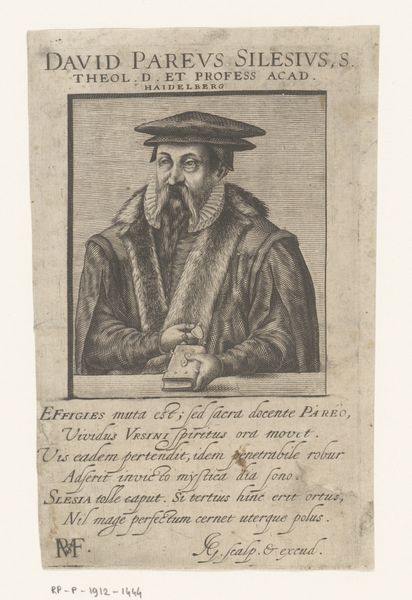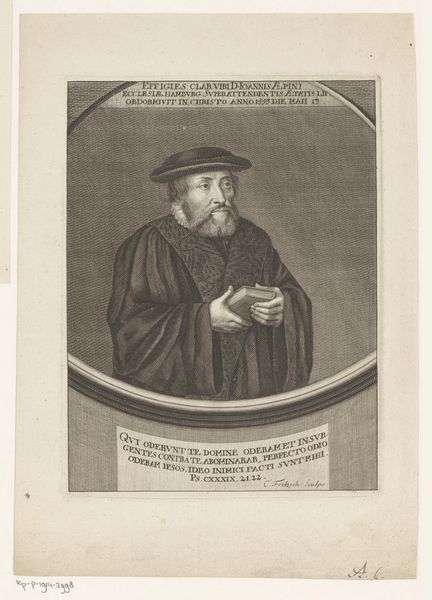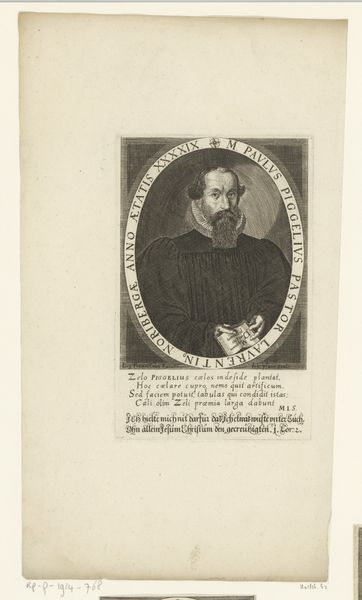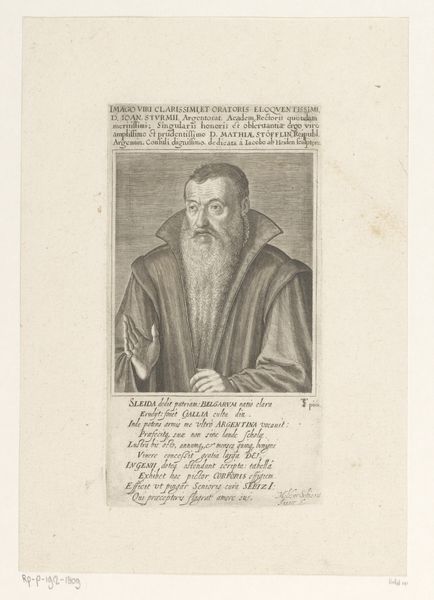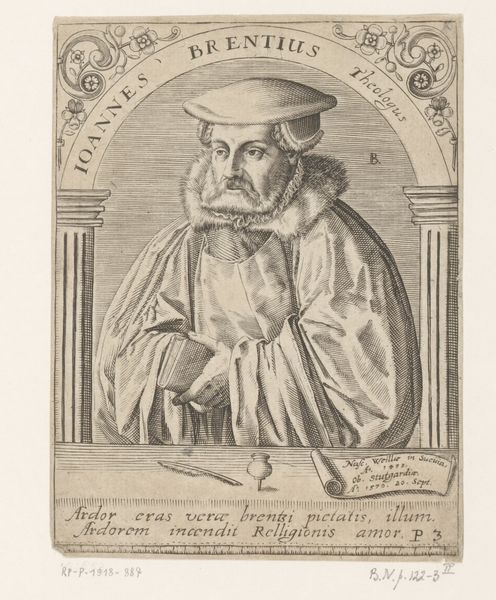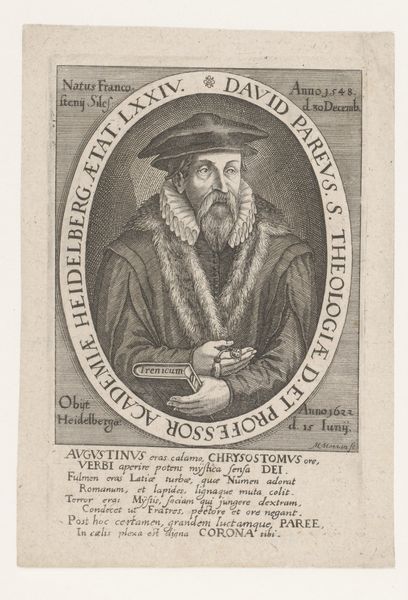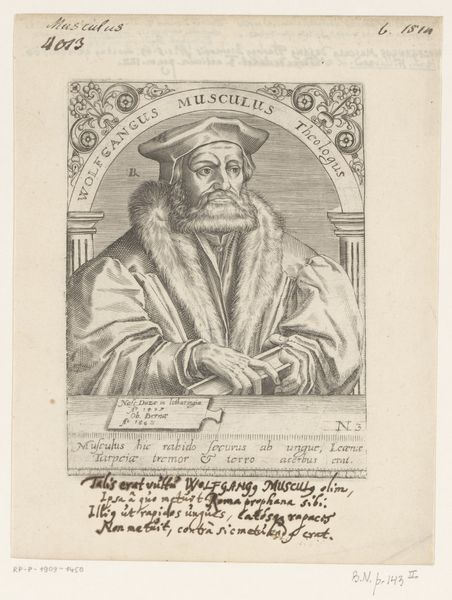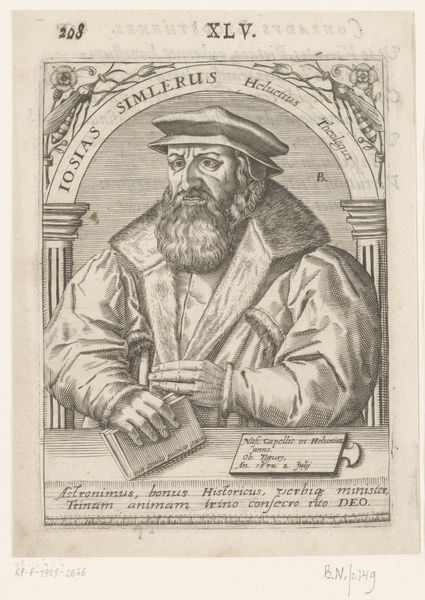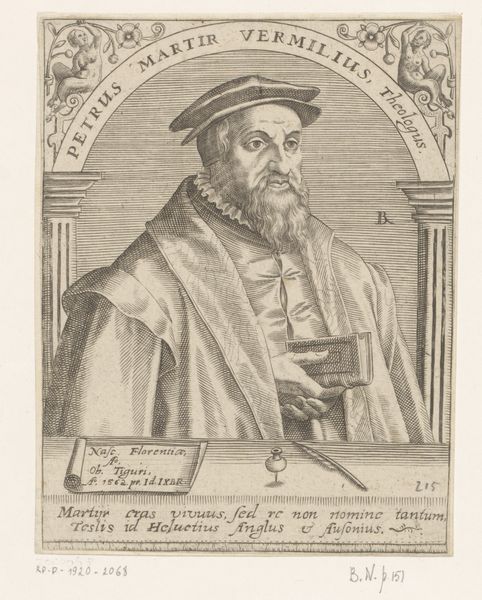
print, paper, ink, engraving
#
portrait
#
medieval
#
baroque
# print
#
old engraving style
#
figuration
#
paper
#
ink
#
engraving
Dimensions: height 173 mm, width 111 mm
Copyright: Rijks Museum: Open Domain
Curator: This engraving is titled "Portret van Bartholomeus Nasser op 54-jarige leeftijd," likely dating between 1614 and 1645, created by Jacob van der Heyden. The detail achieved with just ink and paper is quite striking, it almost feels photorealistic despite the stark medium. I wonder, what stands out to you initially? Editor: The subject’s clothing is incredibly detailed. It makes me think about the artist’s process – meticulously carving these fine lines. What does this process tell us about the piece? Curator: Well, let’s consider the economics of printmaking at the time. Engravings like this were reproducible. The materials – copper plates, ink, and paper – were relatively accessible, but the labor... that was the investment. This suggests a deliberate choice to disseminate Nasser’s image widely. Think about who commissioned this print: what message were they trying to convey, and to whom? The choice to produce an engraving speaks to ideas around access, circulation, and potentially propaganda. Editor: Propaganda? That’s interesting. It's more than just a portrait then. Curator: Precisely. We have to consider the context of production: the Reformation, the rise of print culture, and the power of images to shape public opinion. This wasn’t just about capturing a likeness, but about constructing an image of authority and, possibly, promoting a certain ideology associated with Nasser himself. The detailed rendering isn't just artistic skill, it is a careful construction of visual language with persuasive goals. Editor: So, by examining the materials and the mode of production, we can unpack the layers of social and political meaning embedded in this portrait. Curator: Exactly! It pushes us beyond the individual and towards understanding broader societal forces at play in its creation and distribution. This image of Nasser became a commodity, circulated and consumed to a purpose. Editor: That gives me a whole new way to see engravings. I was only focusing on the individual and its artistic value, missing the means used to reproduce it, and distribute it. Curator: Which is what makes art history so dynamic, and fulfilling to work in.
Comments
No comments
Be the first to comment and join the conversation on the ultimate creative platform.
